The History Of Drones (History Timeline From 1483 to 2024)
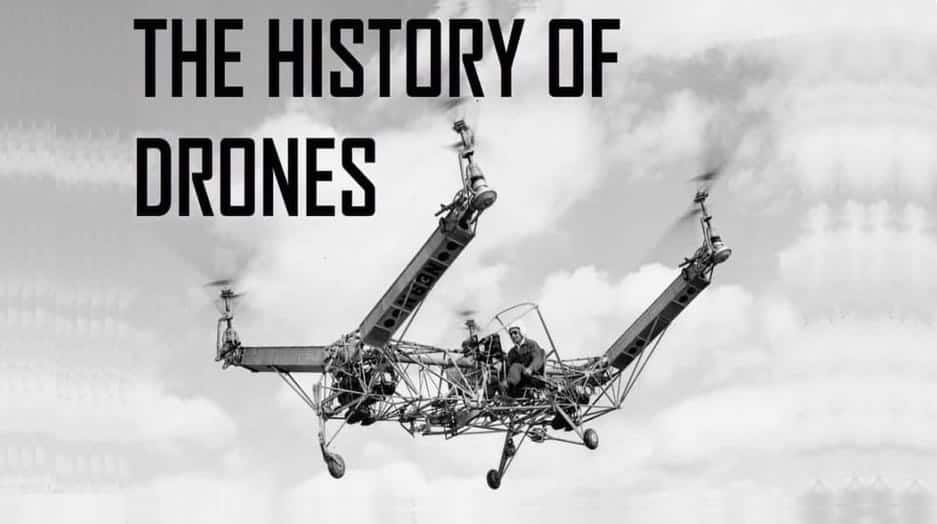
How deep do drones go in history timeline and when did they first appear? The very idea of drones has been around for over a century. Do you know that the first drone (unmanned aerial vehicle) was created almost 537 years ago? Devices that we call “drones” actually fall into two categories.
Some are a fully autonomous gadget that flies without any human intervention, while others work on a remote control – the pilot stands on the ground and watches the movements of the drone. Both species use different technologies and have different potentials but are equally considered drones.
So in this article, we will designate them with one term (Drones or UAVs). We’ll go through the full history of drones Timeline here:
1483. Air Gyroscope by Leonardo Da Vinci
Leonardo Da Vinci designed the so-called air gyroscope in 1483, an aircraft that had the ability to hover above the ground, shown in Figure. The aircraft had a diameter of five meters and the top axle was welded by turning the shaft.
Using sufficient force, the spacecraft flew. This invention is considered to be the forerunner of today’s helicopters, but also of modern multicopter flying by buoyancy at the ends of the rotor blades.
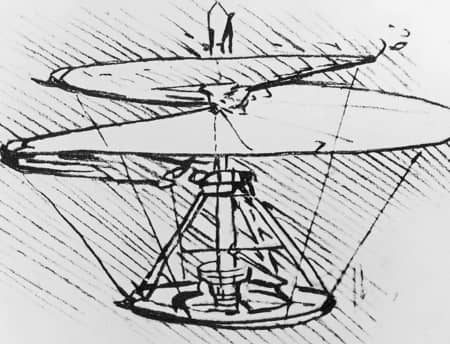
You may conclude that drought drove long before the first aircraft that carried the pilot. The main reason for this was the safety, but also the increase in the weight of the aircraft with the additional load in this case by a man, for which the aircraft would need to create more buoyancy in order to achieve flight.
1782: Unmanned Balloons Filled With Explosives
The history of drones begins in 1782, when the brothers Etienne and Joseph Mongolfier lifted a balloon filled with smoke into the air. The diameter of the supporting shell was 3.5 meters, and the entire apparatus weighed 154 kilograms.
The ball stayed in the air for about 10 minutes while it rose to a height of almost 300 meters and flew over a kilometer. A start was made, and the brothers thought about the development of the project. The second launch became more spectacular: a basket was attached to the ball, in which the first passengers of the drone fit: a ram, a duck and a rooster.
The flight lasted 8 minutes at a distance of about 4 kilometers. Balloons, later called airships, played a large role in the history of aviation, but drones became a real find in military affairs.

1849: First Battle Drone: The Bombing of Venice
Although balloons today do not generally belong to the group of drones, their concept was convincing enough that after the invention of classic aircraft, the military realized the potential of using drones for military purposes.
The first records of the use of drones date from 1849, when the Austrians attacked Venice with unmanned balloons filled with explosives fired from a battleship. Although several balloons reached their destination, the rest of the wind blew back across the Austrian lines.
During the American Civil War (1861-1865), northerners tried to use balloons with incendiary bombs in the hope that the wind would carry them behind enemy lines where they were to cause fires.
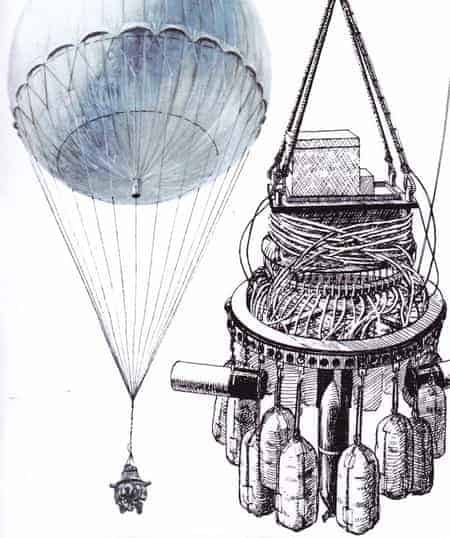
Attempts were made during the 20th century. During World War II, Japan released balloons, trying to harness strong currents at high altitudes in the hope of reaching the shores of America. It is stated that these missions, with free-flying balloons, were half successful.
> Get Latest DJI Phantom 4 PRO HERE <
1917: First Automatic Gyro UAV (Curtiss N-9)
In 1917, Peter Cooper and Elmer A. Sperry invented the first automatic gyro stabilizer, which allowed the aircraft to keep the balance forward. Flight, the unmanned aerial vehicle was born.
This technological achievement successfully transformed the U.S. Navy Curtiss N-9 training aircraft into the first radio-controlled unmanned aerial vehicle (UAV). The Sperry Aerial Torpedo flew 50 miles with a 300-pound bomb but never participated in actual combat.
1918: Kettering Bug (UAV)
From the Hewitt-Sperryproject of Automatic Airplane came his better version called the Kettering Bug in 1918, which can be seen in Figure 3, by American engineer and innovator Charles Kettering.
Also known as the “flying bomb,” the Kettering unmanned system was able to hit targets at distances of up to 121 kilometers, a significant improvement over its predecessors.
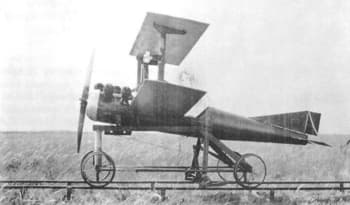
“The Bug” had the ability to reach speeds of about 8 miles per hour, and its then market price was $400. His first and test flight, unfortunately did not go as expected on 2/10/1918. years. The aircraft began to climb too fast and unplanned, eventually collapsing. After the test flight, there were more flights, mostly unsuccessful and due to its unreliability, The Bug was never used on the battlefield.
1931: Fairey “Queen”
1931 – The British developed the Fairey “Queen”, a radio-controlled unmanned aerial vehicle based on the Fairey III F aircraft, and produced three prototypes. According to the name itself, Queen Bee has led to the use of the term drone for all drones, especially radio-controlled drones.
1935: Queen Bee Drone
Aircraft before 1935 could not fly back to the take-off point, so they could not be reused. The invention of the Queen Bee allowed the drone to return to the take-off point, making the technology more practical. The queen Bee has a maximum flight altitude of 17,000 feet (about 5182 meters) and a maximum speed of 100 miles per hour (about 160 kilometers).
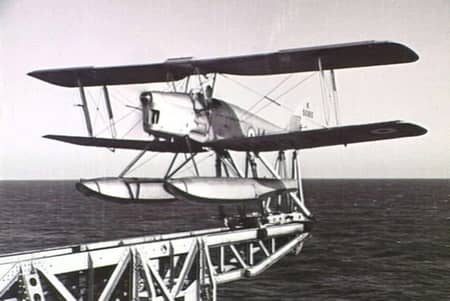
The advent of the Queen Bee drone is the era when drones really started, and it can be said to be the “originator of the mountains” in the history of modern drones. Drones were then used in major battlefields to perform reconnaissance missions.
However, because the technology at the time was relatively backward and could not complete the task well, it was gradually neglected and even abandoned by the military.
1939: Radioplane OQ-2
After World War I, came an even larger generator of military technology development, World War II. The Americans turned to the development of air rockets, also known as air torpedoes. In addition to the development of aerial missiles, a man called Reginald Danny was assigned to develop the drone and was awarded a contract with the United States Army and promised to deliver thousands of drones to operate on radio frequency control.

Most of the drones made served the military as targets for the training of military pilots and their preparation before going to the front line. In addition to the drone targets, a team of experts behind Reginald made a drone called Radioplane OQ-2 (Figure), the first mass-produced drone prototype by the U.S. Army. 9,400 copies.
1945: Radioplane OQ-3
In 1945, after World War II, surplus or retired aircrafts were converted into special research or target aircraft, which became the first trend in the use of modern drones. With the advancement of electronic technology, drones have begun to show his flexibility and importance in the role of reconnaissance missions.
1950: Ryan Firebee UAV
In the early 1950s, the Ryan Aeronautical Company produced 32 unmanned aerial vehicles powered by jet engines that were flying at subsonic speed known as Ryan “Firebee”. Firebee’s UAV (Unmanned Aircraft Vehicle) design dominated the world’s history of drone development, which can be seen in Figure. The model was equipped with a modern missile system capable of tracking target targets.
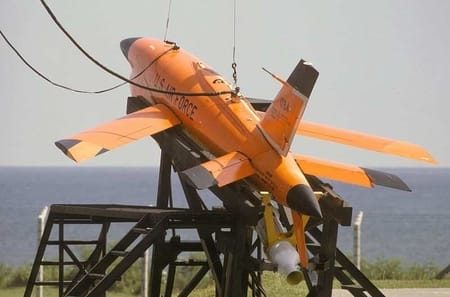
Motivated by the Cold War and the development of better and more advanced weapons than its competitors, the United States in the mid-1950s built the first usable Dash QH-50 unmanned helicopter manufactured for combat. Approximately 800 copies were made and operated with a remote control, moving from the deck of the aircraft carrier’s naval carrier.
They could also be operated from an aircraft that had a flight crew or directly from a land vehicle within a specified range of motion. They were loaded with a variety of weapons, from accompanying rockets, through a variety of smoke curtains that served as an assault diversion or defense aid, to large machine guns on each side of the aircraft.
1956: Convertawings Quadrotor:
This unique quadrotor was the prototype for larger civil quadrotor helicopters during the war. The first flights took place in March 1956. This quadrotor flown successfully many times in the mid 1950’s. This 4 rotors had the position “H”. Because there was the lack of orders from military the project was terminated.
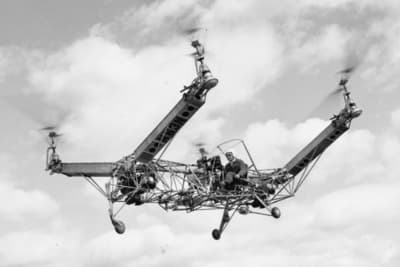
1973: Mastiff First Isreal Military UAV
A drone that has gained worldwide attention, but has been used for defense in Israel since the 1960s. In the Fourth Middle East War of 1973, it was a very pleasant surprise. And this was the primary reason for having live streaming capabilities on drones. It is now easy to implement live streaming, but it was a daunting task for engineers at the time.
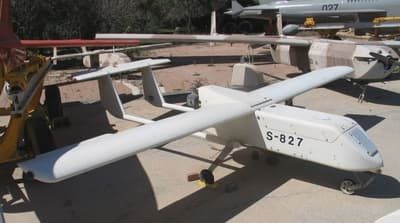
At that time, only large shipping containers could be equipped with televisions and transmitters. At one point, Israel had purchased US drones, but the United States had no problem monitoring enemies’ military exercises along the border (for obvious reasons).
> Get Latest Mavic 3 PRO HERE <
However, the drone was capable of 7 hours of continuous flight. At that time, the video transmitted from the camera was black and white, but later a color camera was introduced, and it was possible to shoot even in complete darkness. The drone has been given a new role. Tracking a single vehicle or human, not an army.
1982: Use of Drones For Military Tasks
In 1982, Israel Aviation Industry Corporation (IAI) pioneered military tasks with drones for other roles. During the Operation of Galilee (War in Lebanon), the Scout UAV system used to play an important combat role in the service of the Israeli Army and the Israeli Air Force. The Israel Defense Forces mainly use drones for reconnaissance, intelligence gathering, tracking and communication.
1986: RQ2 Pioneer UAV
The Pioneer series of UAVs , which first flew in December 1986, provided tactical commanders with specific targets and real-time pictures of the battlefield, performing various tasks such as “reconnaissance, surveillance, and acquisition of targets” by the US Navy.
The cost of this unmanned positioning system is small, meeting the requirements of the United States in Lebanon, Grenada, and Libya for low-cost unmanned acquisition targets in the 1980s, and it was put into practical use for the first time. Pioneer is still in service, taking off with a rocket boost, taking off weight of 416 pounds, and a speed of 109 miles per hour. The plane can float on the water and be recovered by landing on the sea.
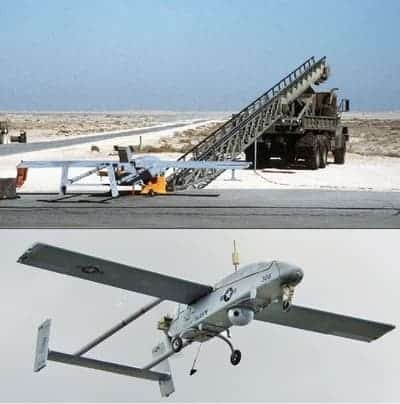
1990: The Military Rise Of Drones
After the 1990s, Western countries fully recognized the role of drones in wars, and raced to apply high-tech to the development of drones: new airfoils and lightweight materials have greatly increased drone life.
Adopting advanced signal processing and communication technology to improve the image transmission speed and digital transmission speed of the drone ; advanced autopilot makes the drone no longer need a land-based TV screen to navigate, but instead flies to the circle point according to the procedure Change altitude and fly to the next target.
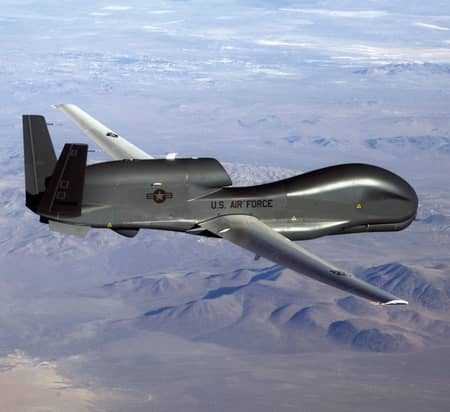
1991: RQ-7B Phantom
The RQ-7B Phantom is the smallest of the drone family and was used by the US Army and Marines on the Iraq and Afghanistan battlefields. This system can locate and identify targets 125 kilometers away from the tactical command center, allowing commanders to observe, direct, and act more agilely. The Mirage 200 is widely used in the Middle East, and its cumulative flight time as of May 2010 has reached 500,000 hours.
1995: RQ1 – Predator UAV
In 1995, the famous military drone “RQ-1 Predator” was developed, and the presence of unmanned aerial vehicles (UAVs) quickly gained attention. In fact, the Predator gained track record in the Iraq War, after which U.S. forces steadily replaced attack aircraft with drones.

The RQ-1 Predator, a General Atomics drone that went into service in 1995, was engaged in a search for the mastermind, Usama bin Laden, following the September 11, 2001 terrorist attacks. The only equipment on the RQ-1 Predator at that time was a reconnaissance camera. However, the RQ-1, which is now equipped with weapons, has been renamed MQ-1. R of RQ-1 is “Reconnaissance” and M of MQ-1 is “Multi-purpose.
2001: First Armed Drone Strikes
Drone murders began in October 2001, and usually the first strikes have killed the wrong people. The blame was for control of the Air Force, Central Command and the CIA.
From 2000 to 2001, the “Predator” drone operated by the CIA repeatedly found bin Laden in various training camps in Afghanistan, but failed to implement hunting missions due to policy restrictions.
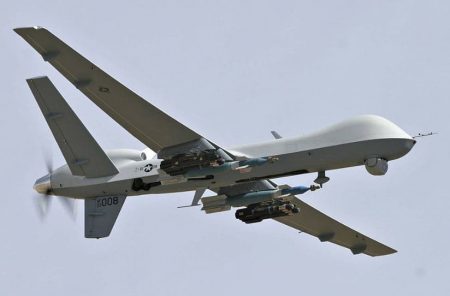
However, the “9 /11” incident completely changed the attitude of the United States, and the US government re-evaluated the role of drones in modern military operations. Since then, U.S. armed drones have begun their official attack missions and have been put into actual combat on a large scale. Armed drones demonstrated extraordinary combat capabilities during the 2003 Iraq war.
2006: DJI Commercial Use of Drones
In 2006, the DJI UAV company that affected the World ’s civilian drone pattern was established. The phantom series of drones launched have had a profound impact worldwide and helped Wang Feng grab the headlines. DJI ’s products The P hantom2 vision was also selected by Time Magazine in 2014.
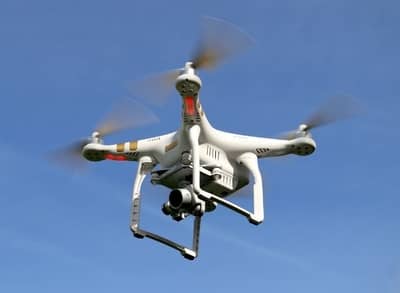
DJI is the world’s largest manufacturer of civilian drones, occupying more than 70% of the world’s market share, whether in rich countries such as Europe and the United States, or less developed countries such as Asia, Africa, and Latin America. Whether it is individual aerial photography enthusiasts or forest fire inspection teams , High-voltage line inspectors, traffic police, and UN peacekeeping forces are using DJI products.
2010: Introduction of Parrot AR. Drone
Parrot was born in Paris, under the leadership of Jean-Pierre Talvard and Henri Seydoux. When it started, the company specialized in the design of voice recognition products, then developed its activity by joining the Bluetooth SIG organization. The first Parrot AR Drone was unveiled in Las Vegas in 2010 and has gained a lot of popularity.
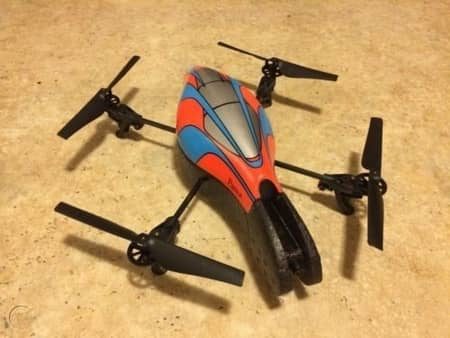
The fact remains that the French company continues to offer quality products and a multitude of accessories, suitable for both beginners, more experienced drone pilots and professionals . Some of these models are still very popular with drone enthusiasts wishing to indulge in immersive flights, have fun with friends or achieve breathtaking aerial views, and its new Anafi drone promises even greater performance.
2014: Amazon Drone Delivery
Amazon makes a big bet on drones, believing that delivering goods by air is the fastest and most efficient way from point A to point B. In order to be able to work with drones as couriers, the corporation is lobbying a number of laws in the USA and other countries, which allows you to use air mini transport for delivery. In addition, new models of such devices, as well as infrastructure elements, are being developed.
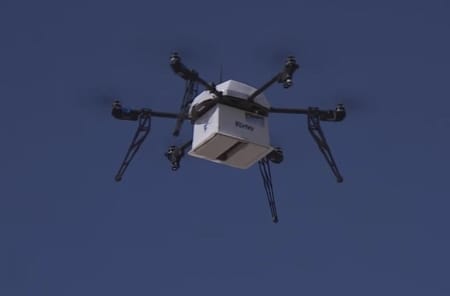
Now it became known that the company filed a patent application for a tower for courier copters, from where the drones will fly with the goods. Drones will create a variety of sizes, the size will depend on the planned carrying capacity.
Now the typical “flying courier” from Amazon is a copter with eight propellers and a computer control system installed in the middle and upper part of the frame. The maximum flight altitude is 120 meters. The speed of the device in the air reaches 80 km/h.
2018: First Passenger Drones On The Market
In 2018, Chinese drone manufacturer Ehang announced at CES in Las Vegas that it will build a fully autonomous passenger quadrocopter. Recently, the company showed a video dedicated to the first test flights of the device in China. A taxi drone that will never get stuck in traffic will take the passenger along the
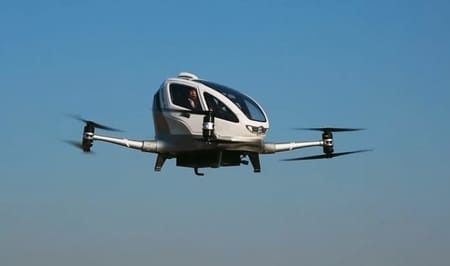
shortest direct route at a speed of 130 km/h and land in any part of the city – existing prototypes of
such drones already exist.
The battery lasts for 23 minutes. During this time, the taxi will have time to deliver the passenger and baggage with a total mass of 230 kg to a distance of about 15 km. According to the company, test flights were carried out by more than a thousand – and they were successful. The drone was able to complete its tasks even in bad weather – it was lifted into the air in fog, at night, and even during a conditional typhoon.
2024: The Future of Drones
The future of drones depends on their legal regulations. For example, in most of the world the weight of a drone should not exceed 30 kilograms (this includes drones, quadrocopters, radio-controlled models). Little by little, these unmanned aerial devices are
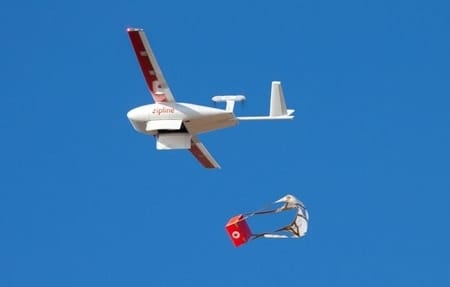
increasingly moving away from the image of a radio-controlled toy and play serious roles in many industries, including agriculture and construction. The potential of drones in construction began to unfold recently – earlier they were used mainly for basic territory inspection. Now, drones are involved in the construction of structures, conduct inspections in real time and, most importantly, monitor the safety of workers.
Drones can scan buildings (some are equipped with X-ray) and collect important metrics for creating 3D maps. Managers and investors will be able to inspect the project in real time, which will make it easier to meet deadlines and calculate the budget without a daily physical presence at the construction site.
425 BC (Fan Facts)
Historical documents prove that the first drone was made in 425 BC. It was a mechanical pigeon waving its wings, receiving energy through a mechanism located in the abdomen. It had a maximum range of 200 meters. During the pioneering beginnings of aviation, most builders and inventors first tried their designs on various models, which can be called the forerunners of today’s drones.


